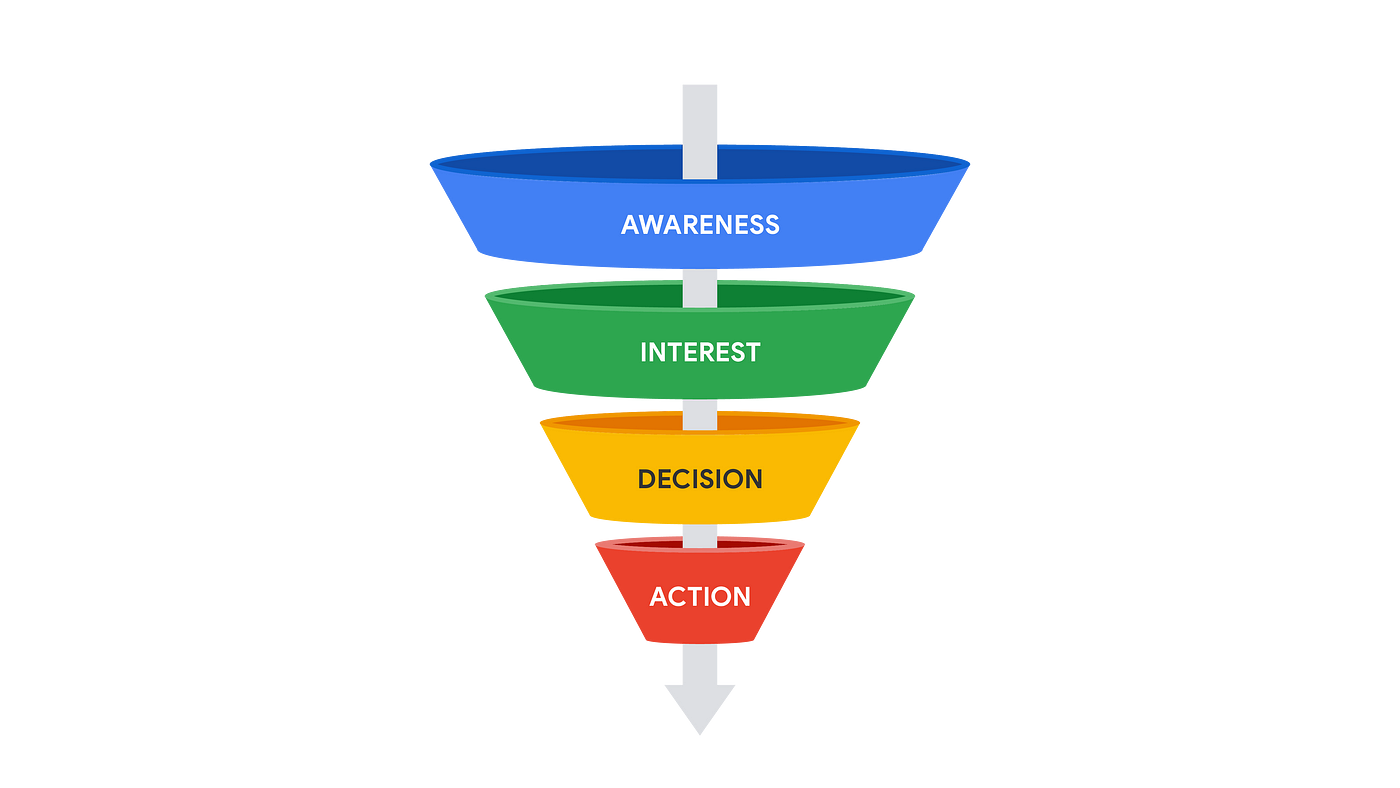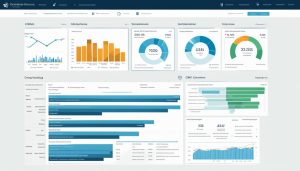1. Introduction
In today’s digital landscape, businesses need to constantly optimize their websites to increase conversions and revenue. One effective method for achieving this is through funnel analysis. Funnel analysis allows businesses to map the flow of website visitors through specific steps that lead to conversions or signups. By understanding the user journey and identifying areas for improvement, businesses can optimize their website and boost conversions.
In this article, we will explore the concept of funnel analysis and how it can be used to identify issues and improve conversions on your website. We will discuss the benefits of funnel analysis, including determining where high-quality visitors come from and using funnel reports for presentations and buy-in. Additionally, we will explore how funnel analysis can be enhanced with complementary tools such as heatmaps and session recordings. Finally, we will examine a case study from CMS Connected to illustrate the impact of funnel analysis on business performance.

2. What is Funnel Analysis?
Funnel analysis is the process of mapping the flow of website visitors through a set of specific funnel steps that result in conversions or signups. It helps businesses understand the user journey throughout their website and identify areas for improvement. Funnel analysis is widely used in various marketing and sales functions because it helps identify barriers that cause users to leave before reaching a conversion point.
A funnel typically narrows towards the end, with the volume of visitors at the top being larger than the volume at the bottom. For example, in an ecommerce funnel, visitors may start at the homepage, move to the category page, then the product page, and finally the checkout page. Funnel analysis tracks user actions at each step of the funnel, highlighting problems and areas for improvement in the customer journey.
3. Benefits of Funnel Analysis on Your Website
Determine where high-quality visitors come from
One of the key benefits of funnel analysis is the ability to determine where high-quality visitors come from. By analyzing the funnel, businesses can identify the acquisition channels that bring in visitors who are more likely to convert. This information can help businesses focus their efforts on those channels to increase conversions.
Tools like Hotjar and Google Analytics provide funnel analysis capabilities that allow businesses to compare performance across different traffic channels. By understanding how visitors who convert reach the website, businesses can optimize their marketing efforts and increase the likelihood of conversions.
Use funnel reports for presentations and buy-in
Funnel reports provide an easy visual aid that can be used in presentations to stakeholders and team members. These reports, along with key metrics and KPIs, help showcase the user behavior across the website and highlight areas for improvement. The visual representation of the funnel, including drop-off points, can inspire action and generate buy-in for optimization projects.
Combine funnel analysis with complementary tools
To gain a deeper understanding of user behavior and context, funnel analysis can be combined with complementary tools such as heatmaps and session recordings. Heatmaps record and aggregate user clicks, mouse movements, and scrolls, providing insights into which elements of the page are being clicked or ignored. Session recordings, on the other hand, provide renderings of individual user sessions on the website, offering a more detailed view of user interactions.
By using these tools in conjunction with funnel analysis, businesses can identify problematic areas and gain valuable insights into user behavior. This information can be used to improve the user experience, guide visitors deeper into the website, and ultimately boost conversions.
4. Enhancing Funnel Analysis with Heatmaps and Session Recordings
Understanding user behavior with heatmaps
Heatmaps are an invaluable tool for gaining insights into user behavior. They record and aggregate user clicks, mouse movements, and scrolls, allowing businesses to see which elements of the page are receiving the most attention and which are being ignored. By placing a heatmap on high-exit pages, businesses can identify problematic elements such as broken links or unseen calls-to-action that may be causing users to leave.
Analyzing the heatmap data can help businesses empathize with the user journey and make data-driven improvements to the user experience. By addressing issues identified through heatmaps, businesses can guide visitors deeper into the website and increase the likelihood of conversions.
Gaining context with session recordings
Session recordings provide a more detailed view of user interactions on the website. These recordings capture individual user sessions, allowing businesses to see how users browse, scroll through content, and interact with buttons before leaving the website. By focusing on high-exit pages and watching session recordings, businesses can spot any issues encountered by users and gather valuable data to improve the user experience.
Session recordings offer a unique perspective into the user journey, helping businesses understand how users navigate their website. By identifying roadblocks and areas for improvement, businesses can optimize their website to guide visitors towards conversions.
5. Gathering Qualitative Feedback through On-Page Surveys
In addition to analyzing quantitative data from funnel analysis, businesses can gather qualitative feedback through on-page surveys. These surveys allow businesses to directly ask visitors about their experience on the website and gather insights into their needs and preferences.
Starting with high-exit pages, businesses can set up website surveys with open-ended questions that encourage visitors to provide feedback. Questions such as “What’s missing from this page?” or “What’s stopping you from continuing?” can help uncover pain points and areas for improvement. By listening to visitors and understanding their needs, businesses can provide a better website experience and increase conversions.
Qualitative feedback obtained through on-page surveys adds depth to the data gathered from funnel analysis. By combining quantitative and qualitative insights, businesses can make informed decisions and prioritize optimization efforts based on user needs.
6. Case Study: CMS Connected and Funnel Analysis
CMS Connected, an IT news and marketing company, utilized funnel analysis to analyze the performance of a piece of gated content. The funnel consisted of three steps: a landing page, a sign-up form, and a success page. Visitors were required to sign up with their name and email address to access the content.
Upon analyzing the funnel, CMS Connected discovered a significant drop-off of approximately 82% between the sign-up form and the success page. This indicated that a large majority of visitors were leaving without interacting with the content. To address this issue, CMS Connected decided to remove the sign-up form and make the content freely available to all visitors.
This decision not only improved the user experience by removing a barrier to accessing the content but also allowed CMS Connected’s content to reach a wider audience. By leveraging funnel analysis, CMS Connected was able to identify and solve a problem, leading to increased engagement and conversions.
7. Conclusion
Funnel analysis is a powerful method for identifying issues and improving conversions on your website. By mapping the flow of website visitors through specific steps, businesses can optimize the user journey and increase the likelihood of conversions. The benefits of funnel analysis include determining where high-quality visitors come from, using funnel reports for presentations and buy-in, and enhancing analysis with complementary tools such as heatmaps and session recordings.
Furthermore, gathering qualitative feedback through on-page surveys allows businesses to understand user needs and preferences, enabling them to provide a better website experience. The case study from CMS Connected illustrates the impact of funnel analysis on business performance, highlighting the importance of identifying and addressing barriers to conversions.
By leveraging funnel analysis and complementary tools, businesses can make data-driven, user-led improvements that result in real growth. Take the time to analyze your website’s funnels, identify areas for improvement, and optimize the user experience to boost conversions and revenue.




No comments! Be the first commenter?